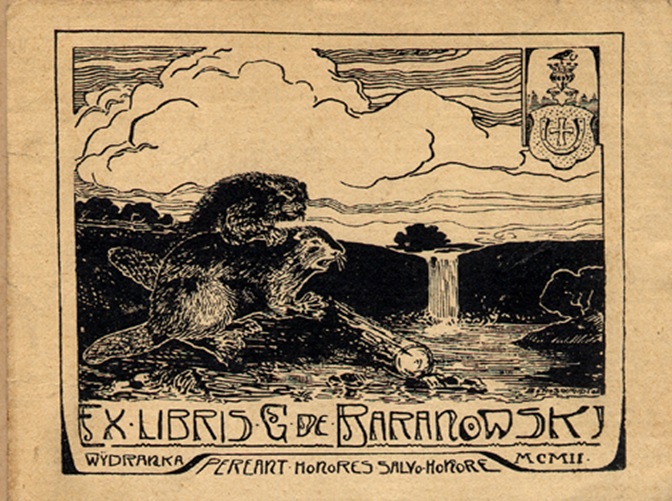Collection type: possessory.
Volume: As of 2024, more than 460 specimens have been identified.
Chronological framework: the main part of the collection consists of rare and valuable publications in Western European languages of the 17th–19th centuries from printing houses in Europe and Russia.
Language characteristics: European, Russian languages.
Additional information: E.I. Baranovsky worked in the Ministries of Justice and Internal Affairs of the Russian Empire, after which he became an agent of the Russian Society of Shipping and Trade, visited different countries on business, and spent a lot of time in India and China.
A significant part of the identified specimens are devoted to the history, geography, and ethnology of the peoples of various countries. Thus, one of the earliest copies in the collection is the Nurnberg edition of 1622 by the traveler A. Werner, which describes countries and cities, from Prague to Constantinople, as well as their statesmen and rulers (Nurnberg, 1622).
Also presented are publications about the life and culture of countries and peoples of the world, such as the illustrated Leipzig edition of the German historian and publicist K. Lang, based on travel notes about the peoples of 5 parts of the world (Leipzig, 1810 and 1835), a guide to Macedonia by the French diplomat Sh.-E. Guy (Paris, 1857), a trip to Turkey by the Irish explorer R. Walsh (Jena, 1829) and others.
Ownership characteristics: on documents belonging to E.I. Baranovsky, as a rule, there are bookplates of the owner, created in Munich in 1902–1904 artist Boto Schmidt (Schmidt Sh Botho). In total, there are 4 types of bookplates, made in different colors and on different types of paper.

Exlibris
All have the coat of arms of the Baranovsky noble family depicted in a decorative frame (in the shield there is a horseshoe with spikes up with a cavalier’s cross in the middle. Above the shield there is a helmet and a crown with a hawk in flight. In the hawk’s claws there is a horseshoe with a cross) and the motto in Latin: “Pereant Honors Salvo Honere" ("Let awards disappear without harm to honor").
One of the bookplates features a landscape depicting beavers (otters?). Most of the specimens identified in the collection preserved 3 of the 4 types of known bookplates.
In addition, on the title pages, titles, at the end of the book, sometimes on the edge there was a stamp: “Bibliothéque G. Baranowski.” Also, a significant part of the books from the library collection have a similar binding. The books were bound in black calico, with book tags of different colors with handwritten inscriptions on the spine: at the top with the title of the book, and at the bottom with the serial number and date of publication. The publisher's binding was preserved on only 32 identified copies.
Time of entry: 1920s
Sources:
1. Киреева, Г. В. Библиотека Егора Ивановича Барановского в фонде Национальной библиотеки Беларуси / Киреева Г. В. // Здабыткі : дакументальныя помнікі на Беларусі / Нацыянальная бібліятэка Беларусі. ― Мінск, 1995―. ― 2010. — Вып. 12. ― С. 116―141 : рис.
2. Киреева, Г. В. Егор Иванович Барановский и его библиотека / Галина Киреева // Рэха беларускіх кнігазбораў : лёсы прыватных бібліятэк : зборнік артыкулаў / Нацыянальная бібліятэка Беларусі ; [складальнік Т. І. Рошчына ; пад навуковай рэдакцыяй А. А. Сушы]. ― Мінск, 2018. ― С. 121―138 : рис.
3. Киреева, Г. В. Из истории книжных собраний Могилевщины: библиотека Е. И. Барановского / Г. В. Киреева // Берковские чтения. Книжная культура в контексте международных контактов, 2011 : материалы Международной научной конференции, Минск, 25―26 мая 2011 г. / [редколлегия: Н. Ю. Берёзкина, В. И. Васильев (сопредседатели) и др.]. ― Минск ; Москва, 2011. ― С. 157―160.
Registration number: K-000000026